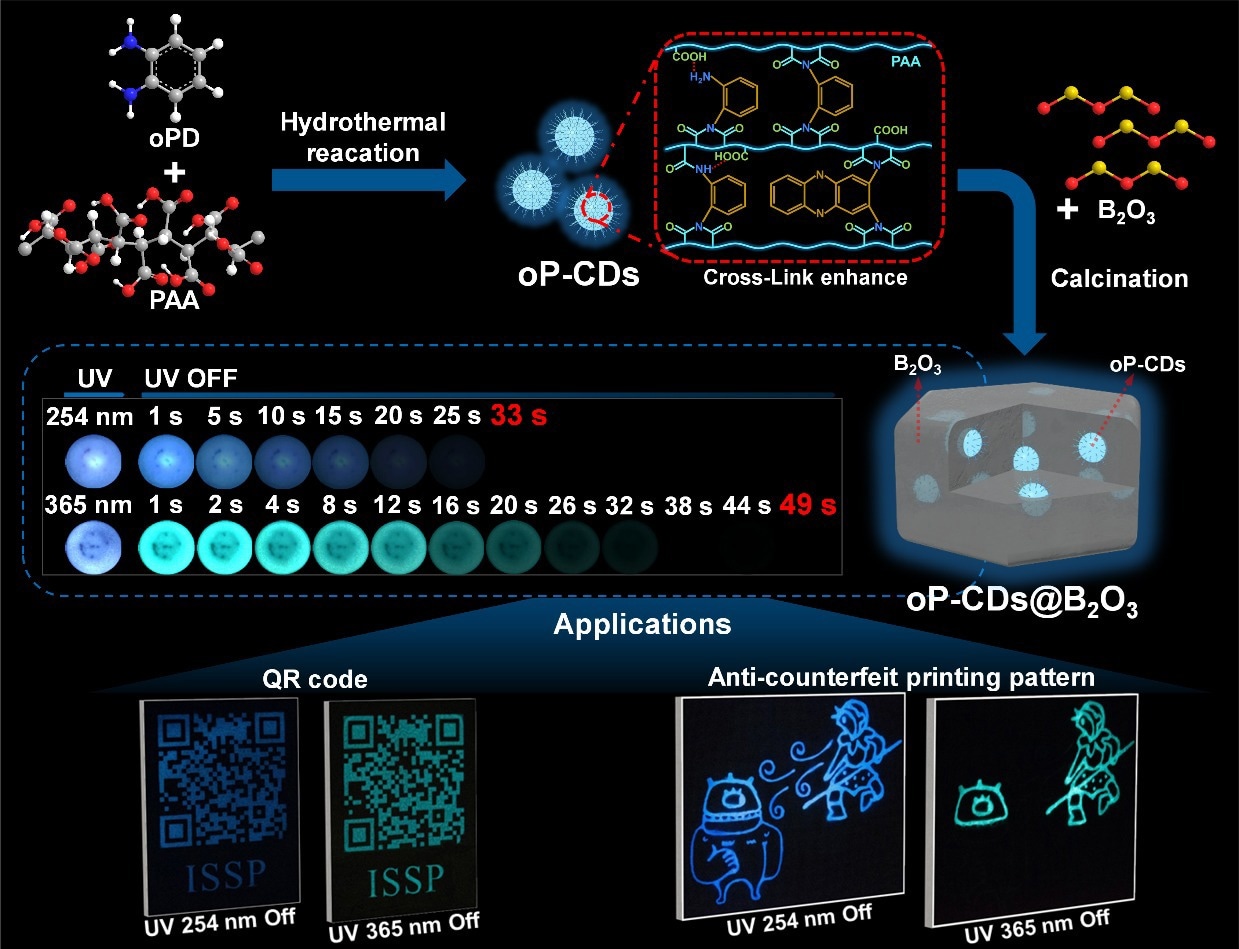Recently, the research team led by Jiang Changlong at the Hefei Institutes of Physical Science, which is part of the Chinese Academy of Sciences, developed a novel method for preparing carbonized polymer nanodots. These nanodots are capable of emitting multicolored, ultra-long, room-temperature phosphorescence ranging from blue to green.

Schematic diagram of the preparation of multi-color, long-lived room-temperature phosphorescent composite materials based on carbon dots and their potential applications in anti-counterfeiting. Image Credit: Zhang Qipengcia
These materials exhibit potential applications in anti-counterfeiting and information encryption.
Qipeng Zhang, Hefei Institutes of Physical Science, Chinese Academy of Sciences
RTP materials glow even after the light source is withdrawn, making them useful for a variety of applications, including security features, data protection, displays, and medical imaging. Carbon dots (CDs) are a type of RTP material that is easy to produce, light-resistant, and safe.
However, producing brilliant and long-lasting RTP materials using CDs is difficult because of non-radiative energy loss. Furthermore, it is difficult to obtain diverse phosphorescent hues from single carbon dot materials, restricting their use. As a result, the development of multi-color, long-lasting, and high-quantum yield RTP carbon dot materials is critical.
This study's approach uses a hydrothermal synthesis of ortho-phenylenediamine (oPD) and polyacrylic acid (PAA) to produce carbonized polymer nanodots. To create these dots, researchers mixed compounds known as ortho-phenylenediamine (oPD) and polyacrylic acid (PAA) in hot water. They then baked these dots with boron oxide (B2O3) to give them a persistent glow, ranging from blue to green.
Adding oPD enabled these CDs to glow in various phosphorescent colors due to the doping with nitrogen. PAA, which consists of a long chain of molecules, causes these CDs to behave similarly to other carbonized polymer nanodots created from polymers.
The extensive cross-linking within these polymers secures the luminescent groups inside the carbonized polymer dots via covalent and hydrogen bonds. This structure minimizes non-radiative losses, thereby enhancing the phosphorescence of the CDs
The hard shell that encases the CDs, namely boron oxide, also serves to protect the phosphorescent energy from non-radiative losses. With a maximum phosphorescence quantum yield of 19.5 % and a visible duration of up to 49 seconds, these carbon dots display exceptional phosphorescence due to the synergistic impact of cross-linked polymer structures inside them and their stiff shells.
Additionally, they show an impressive resistance to photobleaching. These carbon dot materials, therefore, have a lot of potential for use in information encryption and anti-counterfeiting applications.
The team claims that this research advances the understanding of RTP materials and opens the door to the development of high-performing, flexible materials for data security.
Journal Reference:
Zhang, Q., et. al. (2024) Multiemitting Ultralong Phosphorescent Carbonized Polymer Dots via Synergistic Enhancement Structure Design. Advanced Science. doi:10.1002/advs.202400781